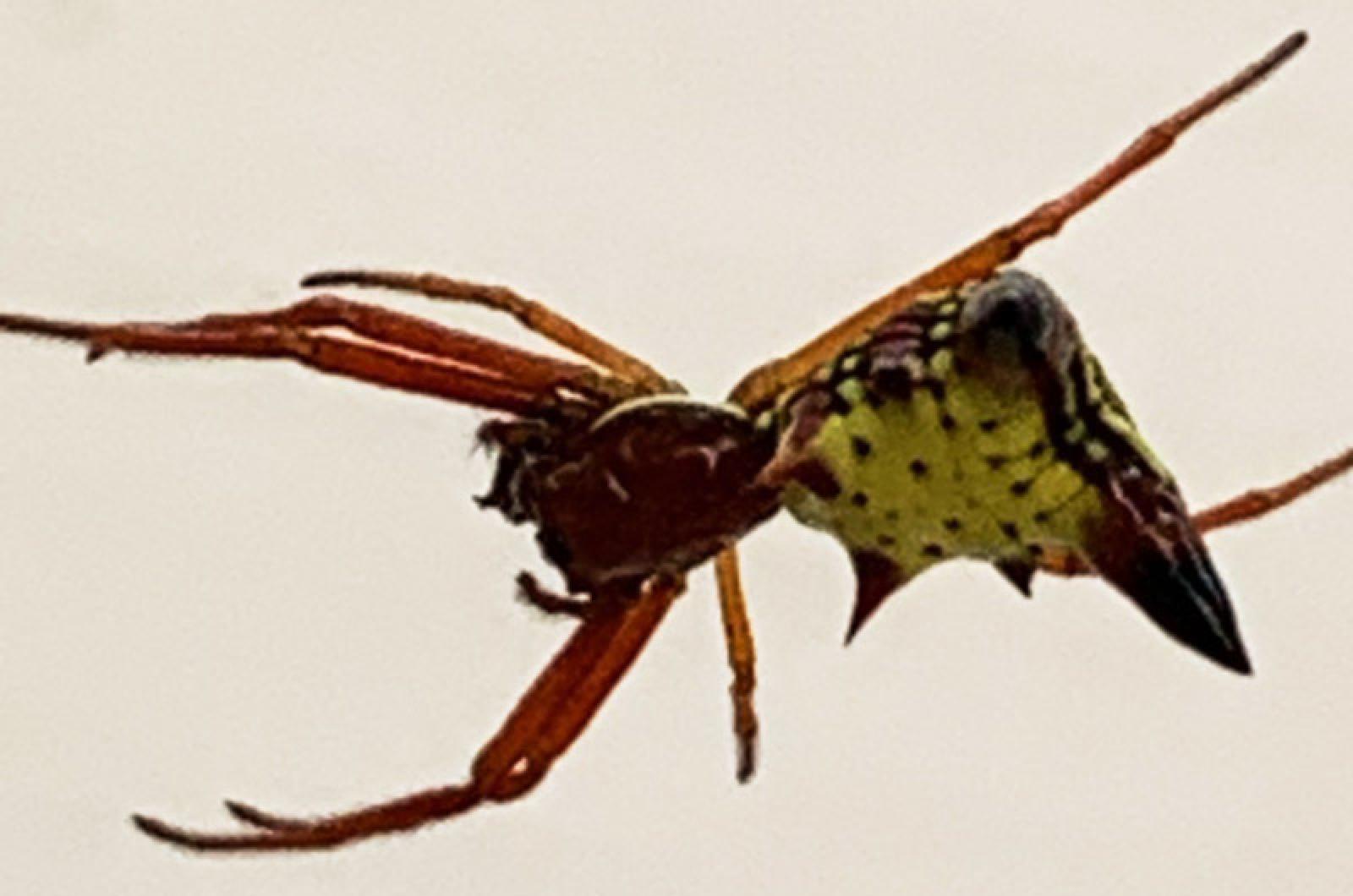The voluptuous backside of the female, arrow-shaped Micrathena spider is part of its survival strategy. Spiders have two basic body parts, the cephalothorax and the abdomen. And what an abdomen this species has.
Also called arrow spiders and arrowhead orb weavers, these crawlers have a unique triangular-shaped body. Females have sharp spines that protrude from the corners of the abdomen, encouraging the comparison to Pokémon’s Pikachu character. The spines are believed to warn off predators and help conceal these spiders while they rest in their web.
Exhibiting sexual dimorphism, males and females of this species are distinctly different. Males are black-and-white and about half the size of females, which have colorful red-and-yellow bodies and those aforementioned spines. The color and spines serve functions so important it is hard to imagine why the males lack these accouterments. The bright color of the female is believed to attract prey, while the spines make it difficult for predators to eat them. Consider the challenge of swallowing those opposing spines — a big gulp would be required or else that spider would be a choking hazard for even the biggest-mouthed bird.
Members of this family of spider spin orb-shaped webs a few feet off the ground, usually in woodlands. These webs come and go daily, and are made of two main parts. The frame is the more permanent portion of the structure and will remain in place over days and even weeks. The spiral webs filling the frame, however, are constructed from scratch each day and are taken down every evening to be consumed by the builder and resident spider. The center of the orb is open and is the place where the spider awaits its prey. The web also includes a zigzagged strand called a stabilimentum whose function is not completely understood.
Other insects are the favored prey of arrow shaped Microthenas.
The most common time to find these spiders in our area is in August when they are laying their eggs. Eggs will be placed at the edge of the web, or on nearby vegetation, and will overwinter and hatch in the spring. Parents will not be around to see their progeny, since females will die before the cold winter comes, having a lifespan of just about a year. And often dad is long gone by that time, having been consumed by his mate shortly after procreation. Spider sex can be deadly in this species.
The genus name Micrathena honors Athena, armored goddess of weaving and spinning, which are certainly appropriate in this case. But Athena was also the goddess of skill and wisdom, and this spider’s survival and talent for constructing complex webs beyond our own abilities and comprehension must give pause to all those who judge only by appearances.
Suzan Bellincampi is director of the Felix Neck Wildlife Sanctuary in Edgartown, and author of Martha’s Vineyard: A Field Guide to Island Nature and The Nature of Martha’s Vineyard.




Comments
Comment policy »